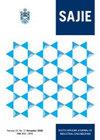EVALUATING HEALTHCARE PERFORMANCE USING FUZZY LOGIC
IF 0.5
4区 工程技术
Q4 ENGINEERING, INDUSTRIAL
引用次数: 3
Abstract
The basic determining elements of healthcare services are the patient’s satisfaction with the service provided by hospitals, which includes behavioural and sentimental aspects and the quality and efficiency of the hospitals themselves. Patients are sometimes very confused, and so express their views very vaguely. These imprecise responses of patients add to the complexity of evaluating quality. The involvement of multiple criteria, uncertainty, and qualitative factors significantly complicates the evaluation of the quality of a healthcare service. Fuzzy logic is a method by which indistinct or hazy responses can be taken up for quality analysis, such as the prioritisation of hospitals, departments, dimensions, etc. A pilot study was carried out in this study comprising 18 private hospitals with more than 100 beds that were selected in the twin city of Bhubaneswar and Cuttack in the state of Odisha, India. Nine quality dimensions were also selected from those used in the literature. A questionnaire survey was conducted in different departments of the hospitals using the nine dimensions. Patients’ responses on a five-point Likert scale were first analysed statistically. Then ranking the dimensions and the hospitals was carried out using fuzzy analysis. The results could be used by healthcare service providers continually to improve their organisation.使用模糊逻辑评估医疗保健绩效
保健服务的基本决定因素是病人对医院提供的服务的满意程度,其中包括行为和情感方面以及医院本身的质量和效率。病人有时很困惑,所以表达他们的观点非常含糊。患者的这些不精确反应增加了评估质量的复杂性。多种标准、不确定性和定性因素的参与使医疗保健服务质量的评估变得非常复杂。模糊逻辑是一种方法,通过这种方法,模糊或模糊的响应可以用于质量分析,例如医院,部门,维度等的优先级。本研究在印度奥里萨邦的布巴内斯瓦尔和卡塔克双城选择了18家拥有100多张床位的私立医院进行了一项试点研究。我们还从文献中选取了9个质量维度。采用九个维度对医院不同科室进行问卷调查。首先对患者在李克特五分制量表上的反应进行统计分析。然后运用模糊分析法对各维度和医院进行排序。研究结果可用于医疗服务提供者不断改进他们的组织。
本文章由计算机程序翻译,如有差异,请以英文原文为准。
求助全文
约1分钟内获得全文
求助全文
来源期刊
CiteScore
1.10
自引率
20.00%
发文量
15
审稿时长
6 weeks
期刊介绍:
The South African Journal of Industrial Engineering (SAJIE) publishes articles with the emphasis on research, development and application within the fields of Industrial Engineering and Engineering and Technology Management. In this way, it aims to contribute to the further development of these fields of study and to serve as a vehicle for the effective interchange of knowledge, ideas and experience between the research and training oriented institutions and the application oriented industry. Articles on practical applications, original research and meaningful new developments as well as state of the art surveys are encouraged.

 求助内容:
求助内容: 应助结果提醒方式:
应助结果提醒方式:


